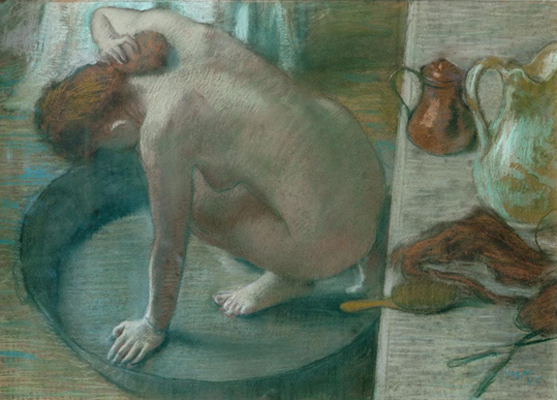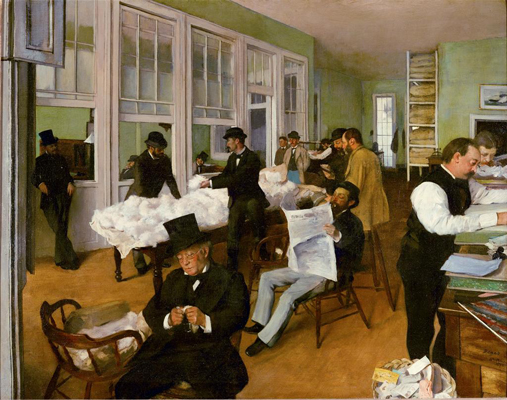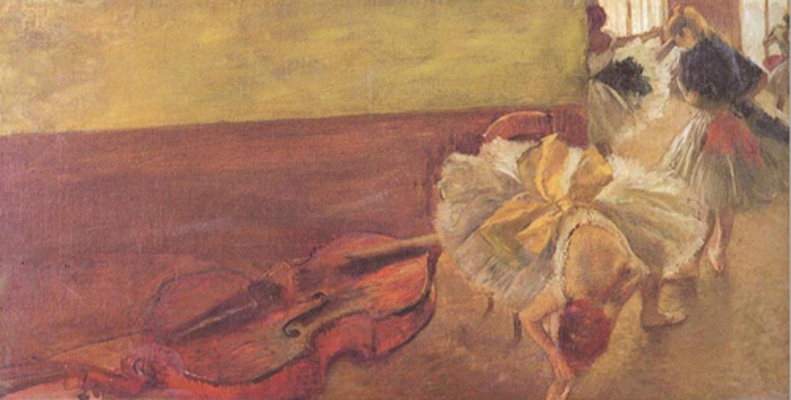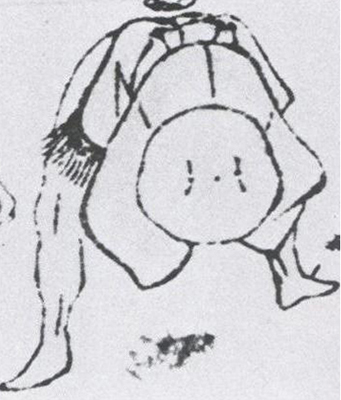
Degas was among many artists in France who acquired Japanese Mangas. Through these Eastern sources, Degas sought to break away from conventional poses and subject matter. The Tub [Fig. 1], among many of Degas’ paintings of women bathing, resonate similarities with scenes of Japanese public bath houses [Fig. 4], especially through his focus of realistic, instead of idealistic, female forms. Degas’ treatment of compositional space seems to have been influenced by that seen in Japanese prints. The Cotton Exchange [Fig. 2] borrows its cluttered yet ordered arrangement of figures in a given space to works like The Four Elegant Accomplishments [Fig. 5]. Degas’ easily recognizable paintings of ballet dances also hint at major Eastern influences. The pose of a dancer in Dancers with double-bass [Fig. 3] shows a striking resemblance to that of a character in Hokusai’s Manga [Fig. 6].





